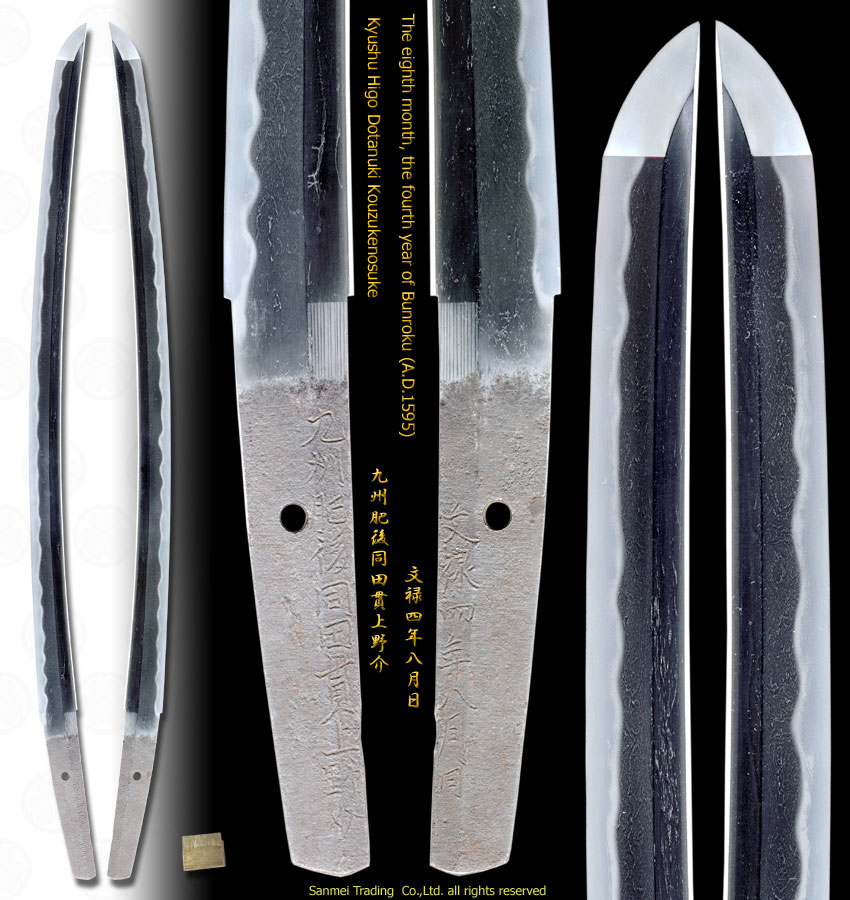in the eighth month, the fourth year of Bunroku
of Authenticity
Length of cutting edge52.8cm Curvature1.7cm Width of base29.2mm Width of Yokote20.7mm Thickness of base6.6mm
Forging pattern (kitae hada) : Kitae hada is a combination of conspicuous Itame hada in hiraji and streaming Masame-hada in Shinogi-ji. There is Ji-nie covers on the surface and thick nie-lines swell that generates so called Chikei activity.
Tempering pattern (hamon) : Hamon pattern is zigzag of which temper line is covered in bright Nie and Nioi activity, Thick Nie feet work toward the cutting edge, Sunagashi streams like a river flow. The entire temper is vivid and brightly clear, holding a dignity of the best cutting performance.
Temper of tip (boshi) : Boshi is straight, medium circle deeply turns back.
Tang (Nakago) : Nakago is UBU. One Mekugi-ana. Kiri horizontal file-marks. Iriyama heel shape. The signature in hakiomote is located on the Shinogiji-side long character, the place of work and smith name that reads Higo Dotanuki Kozukenosuke and the ura side is chiselled the date of year in the eighth month, the fourth year of Bunroku.
MASAKUNI in Donakuni, Higo province, his real name is Koyama Kozukenosuke, belonged to a Enju school. He initially named himself as NOBUYOSHI as a smith name. He had exclusively served for a feudal lord KATO KIYOMASA and had been granted Kanji character [MASA} with the KIYOMASA then changed his smith name [MASAKUNI]. He had been famed also one of the best cutting performance. The workmanship of this wakizashi is, that the entire construction is considerably stout and heroic. The entire blade is well balanced and gallantry upholding dignity of a weapon during the Warring States period. The date of year The fourth year of Bunroku (A.D. 1595) increases it's historical value too.
Copper ground gold plated double layer habaki collar set in shara-saya plain wood mounting.
